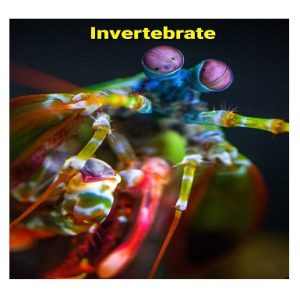Ass. Pro. Dr.: Israa Nasser Ghulam
Ahmed Hussein
College of Education for Pure Sciences.
In fact, the world of invertebrates is full of captivating secrets waiting to be revealed. It is considered a pristine world that has not yet appeared for what it really is. It shows its complex adaptations with its mysterious behaviors. It continues to arouse the interest of scientists and nature lovers alike. Here are some of these masterpieces :
Many invertebrates possess remarkable camouflage capabilities, allowing them to easily blend in with their external surroundings. They have the ability to imitate objects in their environment or imitate the appearance of other animals and thus deceive predators or prey, or mimic toxic species to deter predators. These are secrets within the framework of a presentation of survival strategies on Alive, and within the same field of view, invertebrates have developed extraordinary adaptations to survive in harsh environments , LL .[1]. They are able to withstand wide ranges of extreme temperatures, high pressures, desiccation, or toxic conditions that would be fatal to most other organisms. It has been studied inaccurately. [2]. In addition, there are a lot of complex ecological interactions between invertebrates and their environment, such as symbiotic relationships or specialized feeding strategies, that have not been shown as they should be. There is another kind of really beautiful and wonderful secret in the world of invertebrates that impresses on all mental levels. Scientific and physiological, it is the phenomenon of bioluminescence and light shows that some invertebrates, especially marine ones, show, some of which have the ability to produce light through bioluminescence. They create mesmerizing displays of light, from flickering patterns to intricate color changes. [3] .These offers are still vague until now, with the possibility that they are some kind of communication or attracting friends. To the availability of the secrets behind their physiological and biochemical adaptations, as well as the possession of this very wide segment of animals, diverse and complex life cycles, including multiple stages, transformations, and unique reproductive strategies. Some of them undergo amazing transformations, such as the transformation of a caterpillar into a butterfly or the development of the larval stage of a jellyfish into a medusa, and these secrets in their life bear an insight into the strategies of evolution, especially the vast majority of invertebrate species on Earth that have not yet been discovered. One of the most fascinating things about this world is that invertebrates use a wide variety of methods of communication, either by subtle signals imperceptible to humans or chemical signals (pheromones), vibrations, or sound production. Finally, we do not forget the role of invertebrates in the world of potential medical and technological discoveries. Invertebrates have contributed strongly to this field by harnessing their unique biochemical compounds, such as the venom of cone snails or the anticoagulant properties of leech saliva, for pharmaceutical purposes. [3,4].
Reffrence :
⦁ Eisner, T., et al. (2005). Secret Weapons: Defenses of Insects, Spiders, Scorpions, and Other Many-Legged Creatures. Belknap Press.
⦁ Ghiselin, M. T. (1987). The Economy of Nature and the Evolution of Sex. University of California Press.
⦁ Marshall, J. (2019). Bioluminescence: Living Lights, Lights for Living. Harvard University Press.
⦁ Ruppert, E. E., Fox, R. S., & Barnes, R. D. (2004). Invertebrate Zoology: A Functional Evolutionary Approach. Brooks/Cole Thomson Learning.
 University of Kerbala
University of Kerbala



























































